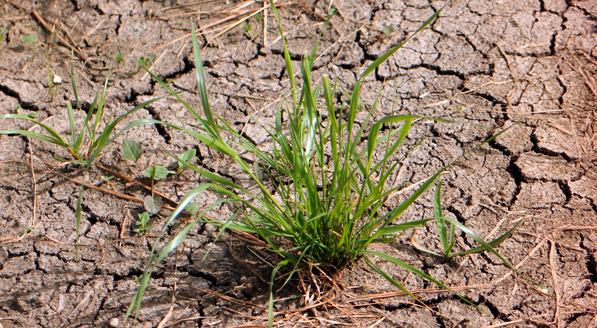 Image: Pixabay
Image: Pixabay
The first signs of hot, dry weather caused by El Niño are threatening food producers across Asia, while American producers are counting on heavier summer rains from the weather phenomenon to ease the impact of severe drought. El Niño, a warming of water surface temperatures in the eastern and central Pacific Ocean, is expected to develop in the coming months, forecasters say. The phenomenon's impact typically causes hot, dry weather in Asia and Australia, while also bringing heavier than normal rainfall to the southern US and southern South America.
As El Niño approaches, wheat production in Australia, the world's second-largest exporter of the grain, is expected to be affected by dry weather, while palm oil and rice production will likely suffer in Indonesia, Malaysia and Thailand, forecasters predict. and analysts said.
{module Form RD}
Soil is drying out in India and Pakistan, which is expected to hamper summer crop planting, while El Niño is also expected to blunt the impact of the crucial June-September monsoon season in South Asia. “We are looking at long-term drought in Australia from now until at least August,” said Chris Hyde, meteorologist at US-based Maxar. “The seasonal outlook in India is a weaker than normal monsoon for the entire country, extending into Pakistan.”
Lower production of cereals and oilseeds in Asia because of El Niño is likely to raise concerns about food inflation for some of the world's most vulnerable consumers, dashing hopes of further relief from lower prices in recent months. Even if the weather pattern ends up boosting agricultural production in the Americas, the impact in Asia could have repercussions on global food markets.
Wheat prices fell to two-and-a-half-year lows this week, while corn and soybeans have declined from multi-year peaks set in 2022 when the Russia-Ukraine war and COVID-19 disrupted global supplies.
WHEAT, PALM OIL AND RICE
Australia, which has produced bumper wheat crops for three years, has made a good start to the 2023/24 planting season with ample soil moisture, but below-normal rainfall and warmer temperatures are forecast during the crucial winter months. southern hemisphere winter.
For Indonesia and Malaysia, which supply 80% of the world's palm oil, drought in the second half of 2023 could hit 2024 yields. “Concerns about dry weather have increased compared to the situation last month. The outlook suggests El Niño is developing,” said Phin Ziebell, agribusiness economist at National Australia Bank, noting that Western Australia, New South Wales and Queensland have seen little rain.
The onset of monsoon rains in South Asia is likely to be somewhat delayed this year and El Niño could affect rice and oilseed production. “El Niño may develop in July...it may have an impact on the second half of the season,” said OP Sreejith, senior scientist at the India Meteorological Department.
However, Sreejith said India could get lucky with a weak El Niño as warmer sea surface temperatures in the Indian Ocean and southwesterly winds could bring more rain.
DROUGHT-HIT UNITED STATES AND ARGENTINA MAY RECEIVE RELIEF
In the United States and Argentina, where drought has reduced wheat and soybean harvests this year, the forecast for abundant rain in the second half of the year would benefit crops, although overall production depends on the timing of El Niño. “Having an El Niño now in winter does not mean that the atmosphere will automatically react and start raining,” said Germán Heinzenknecht, meteorologist at Applied Climatology Consultancy in Argentina. “In general, much of the Pampean region and northern Argentina has above-normal rainfall due to the El Niño phenomenon.”
Meteorologists are divided over how quickly the transition to El Niño from the current La Niña, a pattern when Pacific Ocean waters become colder than normal, will affect U.S. weather, but the change is expected to be complete during the stage of development of corn and soybeans. “I think growing conditions will be very good,” said David Tolleris, president of forecasting service WxRisk.
The rains are likely to help recharge depleted soil moisture in the U.S. Plains and set the stage for a much better winter wheat harvest in 2024, according to forecasters.
The weather is expected to be benign for much of China during the crucial months of corn, soybean and rice production, although pockets of drought are likely. In Europe, where El Niño is not typically linked to pronounced weather patterns, major crops are in good shape following abundant spring rains, with the exception of drought-stricken Spain.
Source: Seane Lennon | agrolink










